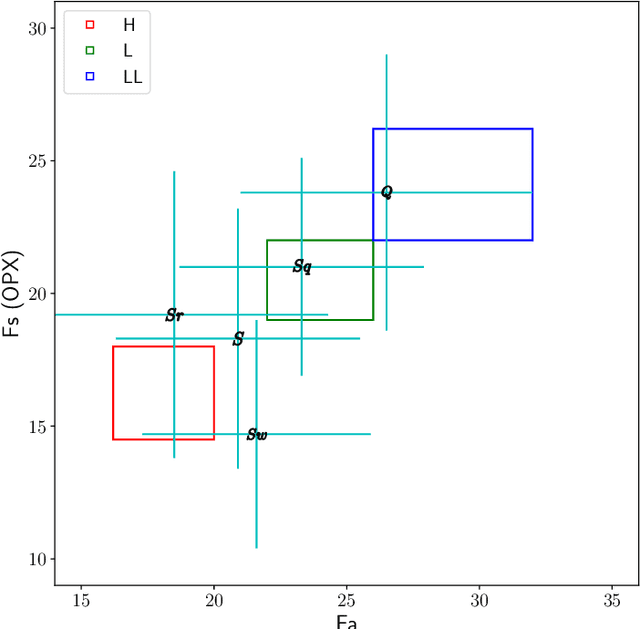David Korda
Neural network for determining an asteroid mineral composition from reflectance spectra
Oct 03, 2022



Abstract:Chemical and mineral compositions of asteroids reflect the formation and history of our Solar System. This knowledge is also important for planetary defence and in-space resource utilisation. We aim to develop a fast and robust neural-network-based method for deriving the mineral modal and chemical compositions of silicate materials from their visible and near-infrared spectra. The method should be able to process raw spectra without significant pre-processing. We designed a convolutional neural network with two hidden layers for the analysis of the spectra, and trained it using labelled reflectance spectra. For the training, we used a dataset that consisted of reflectance spectra of real silicate samples stored in the RELAB and C-Tape databases, namely olivine, orthopyroxene, clinopyroxene, their mixtures, and olivine-pyroxene-rich meteorites. We used the model on two datasets. First, we evaluated the model reliability on a test dataset where we compared the model classification with known compositional reference values. The individual classification results are mostly within 10 percentage-point intervals around the correct values. Second, we classified the reflectance spectra of S-complex (Q-type and V-type, also including A-type) asteroids with known Bus-DeMeo taxonomy classes. The predicted mineral chemical composition of S-type and Q-type asteroids agree with the chemical composition of ordinary chondrites. The modal abundances of V-type and A-type asteroids show a dominant contribution of orthopyroxene and olivine, respectively. Additionally, our predictions of the mineral modal composition of S-type and Q-type asteroids show an apparent depletion of olivine related to the attenuation of its diagnostic absorptions with space weathering. This trend is consistent with previous results of the slower pyroxene response to space weathering relative to olivine.
* main text: 12 pages, 12 figures, 10 tables; appendix: 8 pages, 20 figures, 6 tables
 Add to Chrome
Add to Chrome Add to Firefox
Add to Firefox Add to Edge
Add to Edge